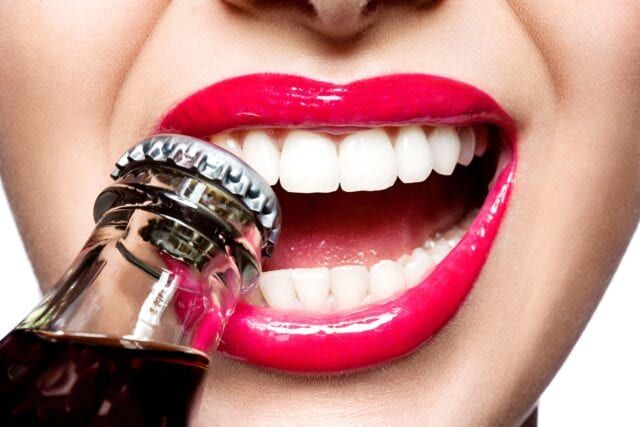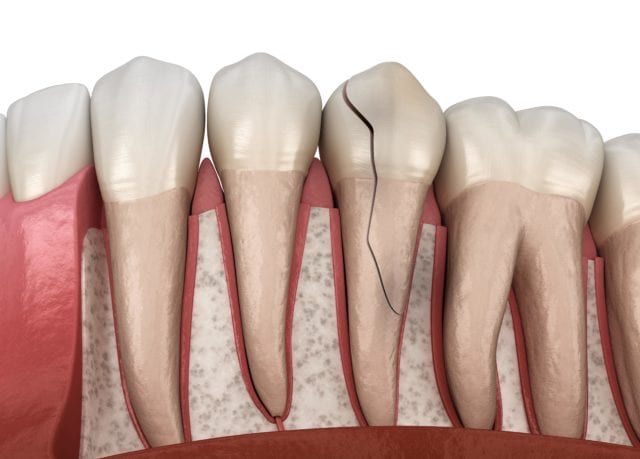Did you know that teeth can break? It’s true! Teeth can fracture, or break, for a variety of reasons. If you have a broken tooth, it is important to seek treatment as soon as possible. There are a few different ways a tooth can break, as well as different ways to fix a broken tooth. In this blog post, we will discuss the different ways that teeth can break and discuss the four most common ways to repair broken teeth: composite bonding, veneers, dental crowns, and extraction with dental implants. The best option for you will depend on the severity of the break and on your own personal dental history.
Common Causes of Broken Teeth
First, let’s take a look at how teeth can get broken in the first place. There are many things that can cause teeth to break. Some common causes of broken teeth include:

-Biting down on hard objects: This can include chewing on ice, popcorn kernels, or hard candy. It is important to be careful when biting down on hard objects, as they can easily fracture your teeth.
-Grinding your teeth: Teeth grinding, also called bruxism, is a condition that causes people to grind their teeth. Teeth grinding can be caused by stress, anxiety, or sleep disorders. If you think you may be grinding your teeth, it is important to talk to your dentist about treatment options.
-Using your teeth to open things: Many people use their teeth to open things, such as bottles or chip bags. This can put a lot of pressure on your teeth and cause them to fracture.
-Trauma to the mouth: Trauma to the mouth, such as a car or sports accident, can cause teeth to break. If you have suffered trauma to the mouth, it is important to see your dentist or doctor as soon as possible.
-Tooth decay: Tooth decay, or cavities, can weaken teeth and make them more likely to break. It is important to brush and floss your teeth regularly and see your dentist for regular checkups to prevent tooth decay.
How Teeth Break

Now that we know teeth can break for a variety of reasons, let’s look at some basic tooth anatomy to understand how they can break. For starters, there are two main parts that make up a tooth: the crown and root. The crown is the visible portion above the gums, while the root is concealed in the jawbone under the gums. Damage to the crown is more likely, however the roots can also be susceptible to damage.
Additionally, the tooth is made up of three layers: the enamel, dentin, and pulp. The enamel is the hard outer layer, the dentin is the middle layer, and the pulp is the soft tissue inside the tooth that contains blood vessels and nerves. The severity of a broken tooth depends on how many layers the damage affects.
The Best Ways to Repair Broken Teeth
There are many ways to treat broken teeth. The best treatment option for you will depend on the severity of your break and your own personal dental history. The four most common treatments for broken teeth are composite bonding, veneers, dental crowns, and extraction with dental implants.
Composite Bonding
Composite bonding is a type of dental restoration that is used to repair minor chips, cracks, or decay. Composite bonding involves using a tooth-colored resin to fill in a small to medium damaged or decayed area of the tooth. Composite bonding is less expensive than other types of dental restorations and can usually be done in one visit to the dentist. While it provides an ideal way to fix minor damage or decay, it is not ideal for repairing larger or deeper areas of damage.
Veneers
Veneers are thin pieces of porcelain that are bonded to the front of the teeth. Veneers are used to improve the appearance of teeth and can be used to treat chipped, cracked, or discolored teeth. Veneers are more expensive than composite bonding and usually require two visits to the dentist. However, they also last longer than composite bonding and are more resistant to future damage. With that being said, veneers may still not be ideal for someone who grinds their teeth.
Dental Crowns
Dental crowns are caps that are placed over the teeth. Dental crowns can be made from a variety of materials, such as porcelain, metal, or ceramic. Nowadays, however, most dentists use porcelain or ceramic. Crowns are used to restore the function and appearance of damaged teeth. Dental crowns are more expensive than composite bonding and veneers and usually require two or three visits to the dentist. However, dental crowns can be used to treat extensive damage or decay. In fact, dental crowns are often used to restore teeth after having a root canal. This is because the dental crown can entirely encapsulate the damaged tooth to provide support and protection.
Extraction with Dental Implants
In some cases, it may be necessary to extract a broken tooth. This is usually only done if the tooth is severely damaged and cannot be repaired with other treatments. Oftentimes, extractions are needed when a tooth root has fractured. After the damaged tooth is extracted, a dental implant can be placed to restore the function and appearance of the tooth. A dental implant is a titanium screw that is placed in the jawbone to act as an artificial tooth root. Once the implant heals and fuses with the surrounding bone, it can be used as an anchor to support a dental prosthetic, such as a crown. Dental implants are more expensive than other treatments and usually require two or three visits to the dentist. However, they are considered to be the gold standard of tooth replacement options.
In Conclusion
In this blog, we have discussed common ways that teeth break, how teeth can break, and the best ways to repair broken teeth. We have looked at four common treatments: composite bonding, veneers, dental crowns, and extraction with dental implants. Each treatment option has its own set of benefits and drawbacks. The best treatment option for you will depend on the severity of your break and your personal dental history. If you have any questions or concerns, be sure to consult with your dentist. They will be able to help you choose the best treatment option for you. Thanks for reading!

